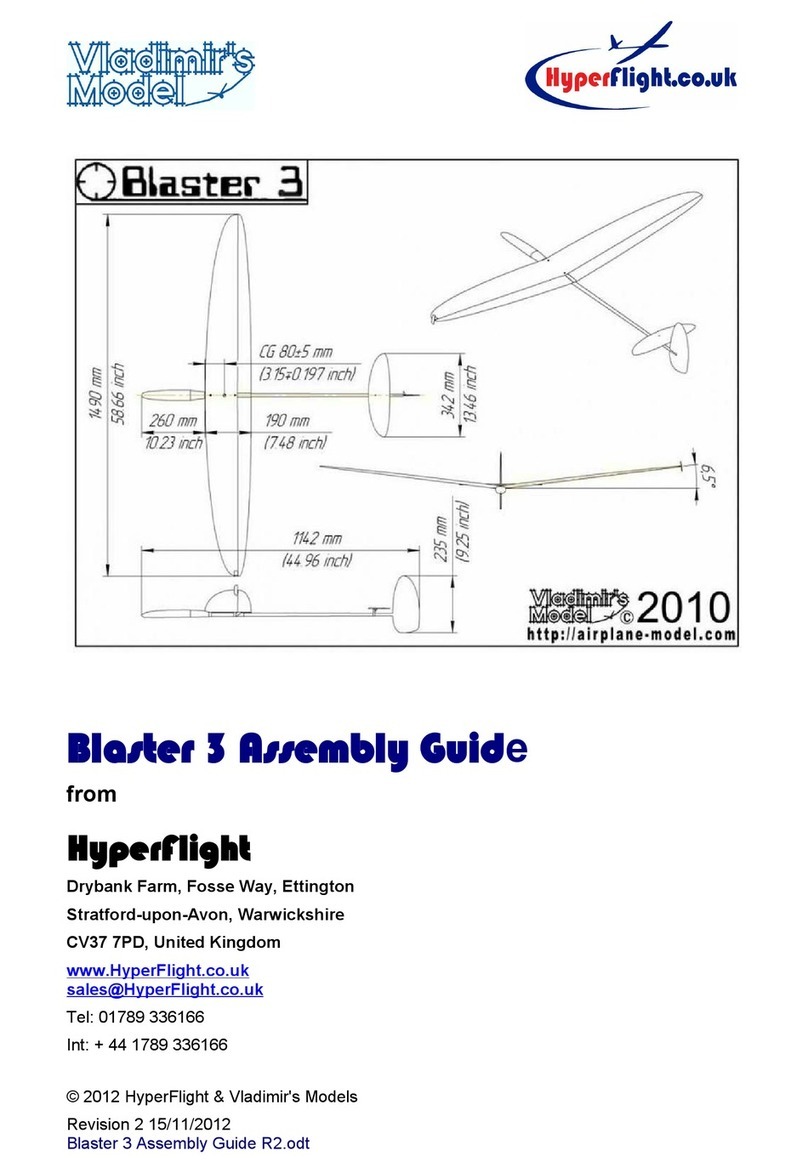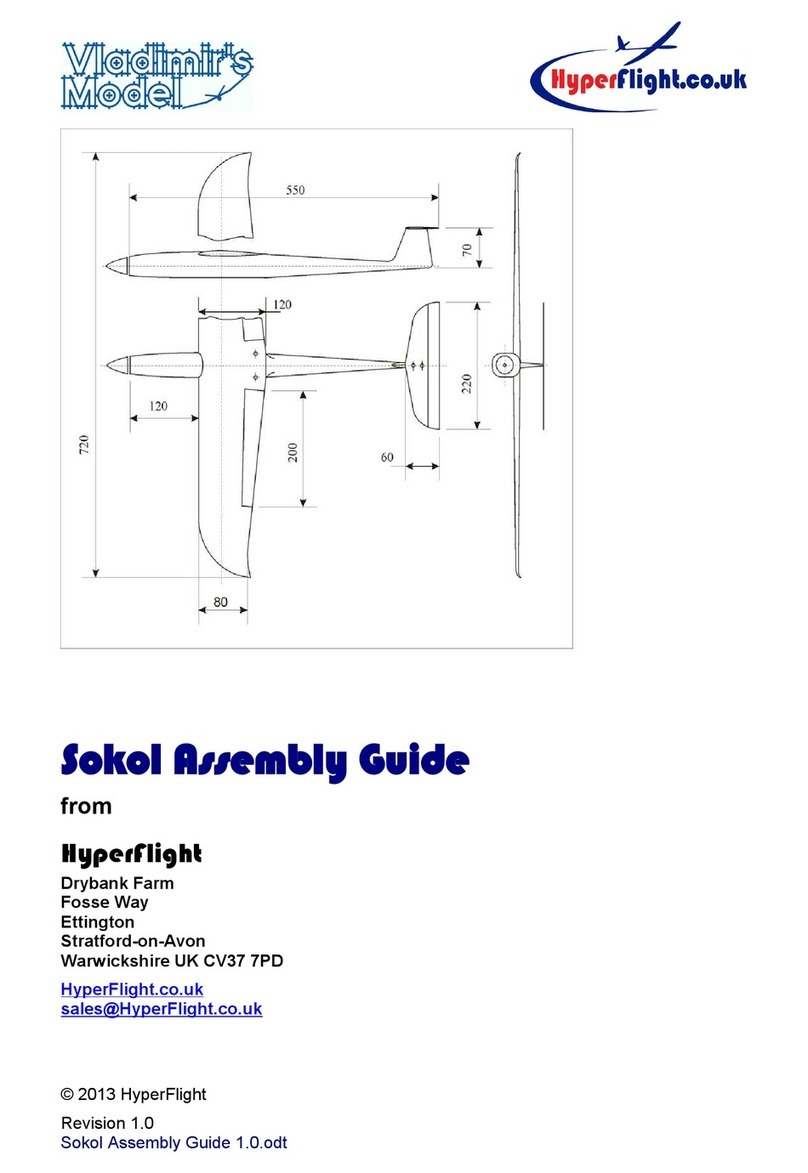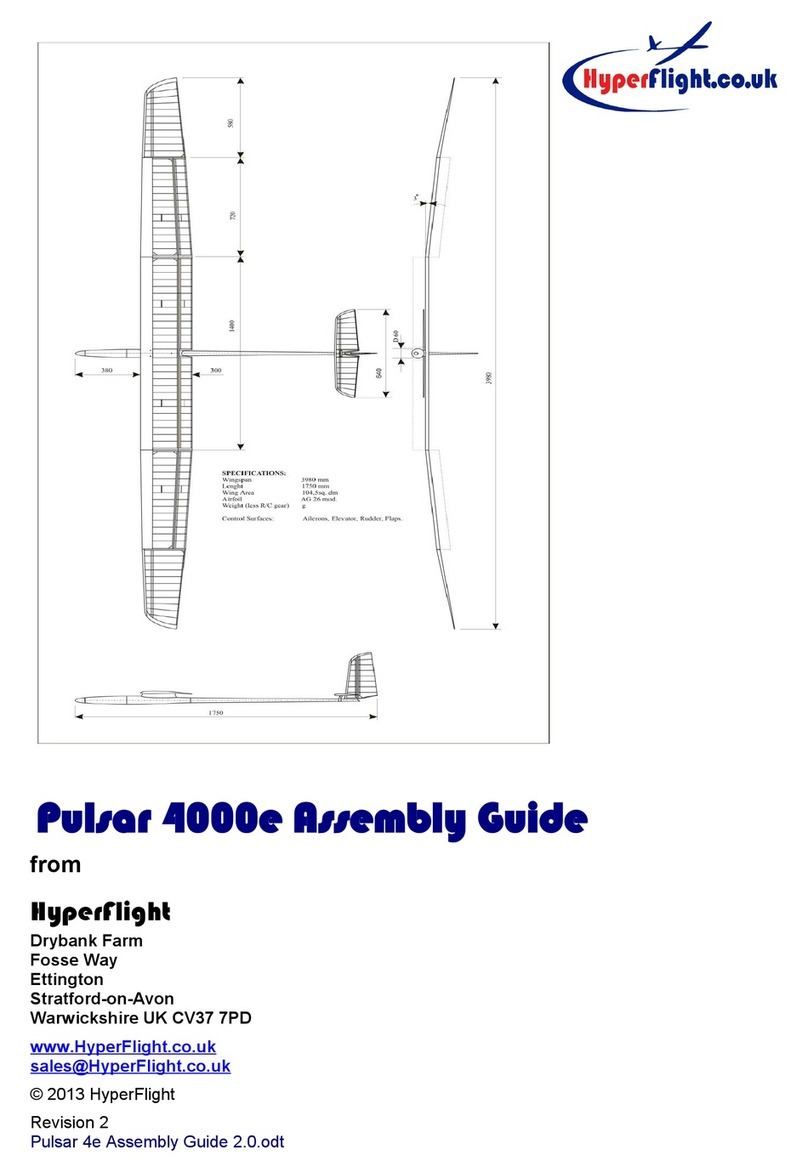Warning, this is not a toy!
I you are new to the hobby o lying RC model airplanes, DO NOT attempt to ly this
model by yoursel ! There are hundreds o BMFA (British Model Flying Association)
clubs in the UK. Ask your local hobby shop or the location o the nearest club in your
area, or check out the www.bm a.org.uk (or your national modelling organisations)
web site. Many clubs o ten have quali ied instructors to teach you how to ly. I you
are an accomplished pilot then you should have no problem in lying this model.
However the Supra-e can ly very ast, and is potentially a lethal object. Do ly
responsibly, and make sure your third party liability (eg BMFA) insurance is valid.
Limit of Liability
All HyperFlight Models products are constructed to the highest standard and made
strong enough or reasonable usage by an experienced and responsible r/c aircra t
pilot. By keeping this model you con irm that the parts have not been structurally
damaged and are it or purpose as received.
The cra tsmanship, attention to detail, and actions o the builder/ lyer o this model
airplane kit will ultimately determine the airworthiness, light per ormance, and the
sa ety o the inished model. You con irm that you take ull responsibility or the sa e
usage, construction, and maintenance o the model, and you will not hold
HyperFlight Ltd or its owners, sta , agents, contractors, or helpers in any way
responsible or any damages or injury that may occur as a result o operating or
lying this model. HyperFlight’s sole obligation shall be to replace those parts o the
kit proven to be de ective or missing. I you are not willing to agree to this binding
condition o sale please return the model in as-received condition to Hyper light or a
re und.
Acknowledgement
HyperFlight would like to thank Steve Bowdler or his help writing this guide, based
on his build o a Sky Master glider.
We would really appreciate input by other builders – both instructions or speci ic
models, and some construction photos.
HyperFlight Sky Series Assembly Guide 2
































